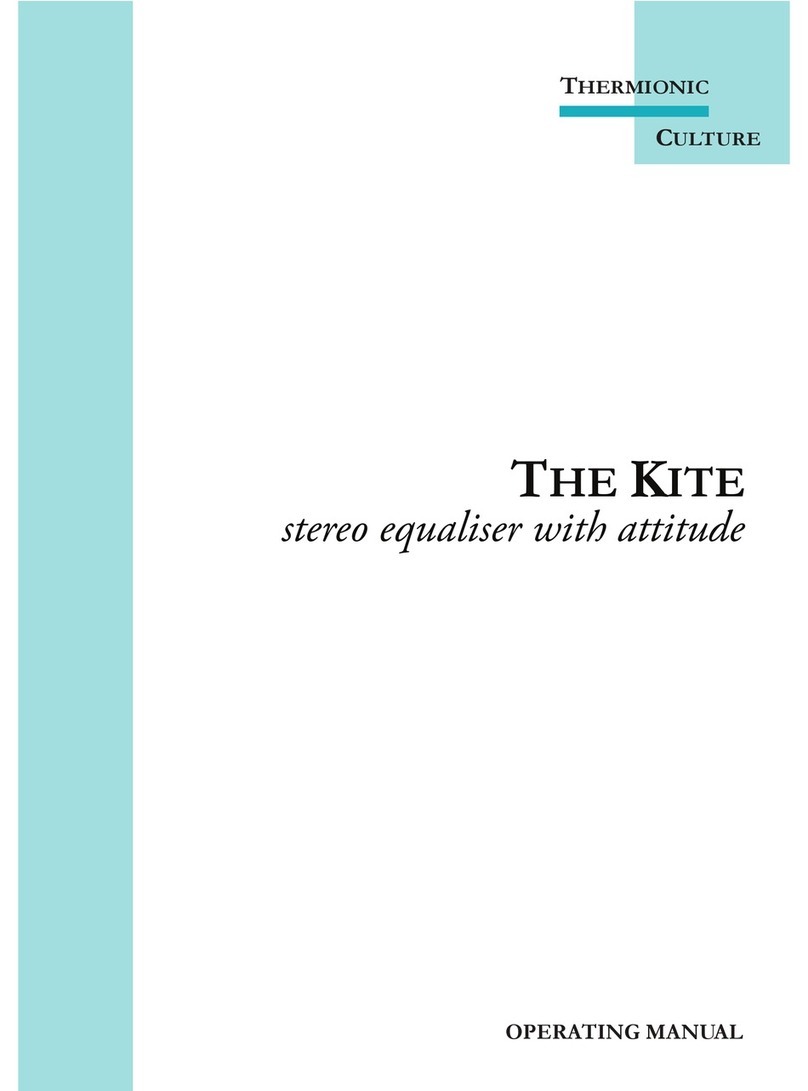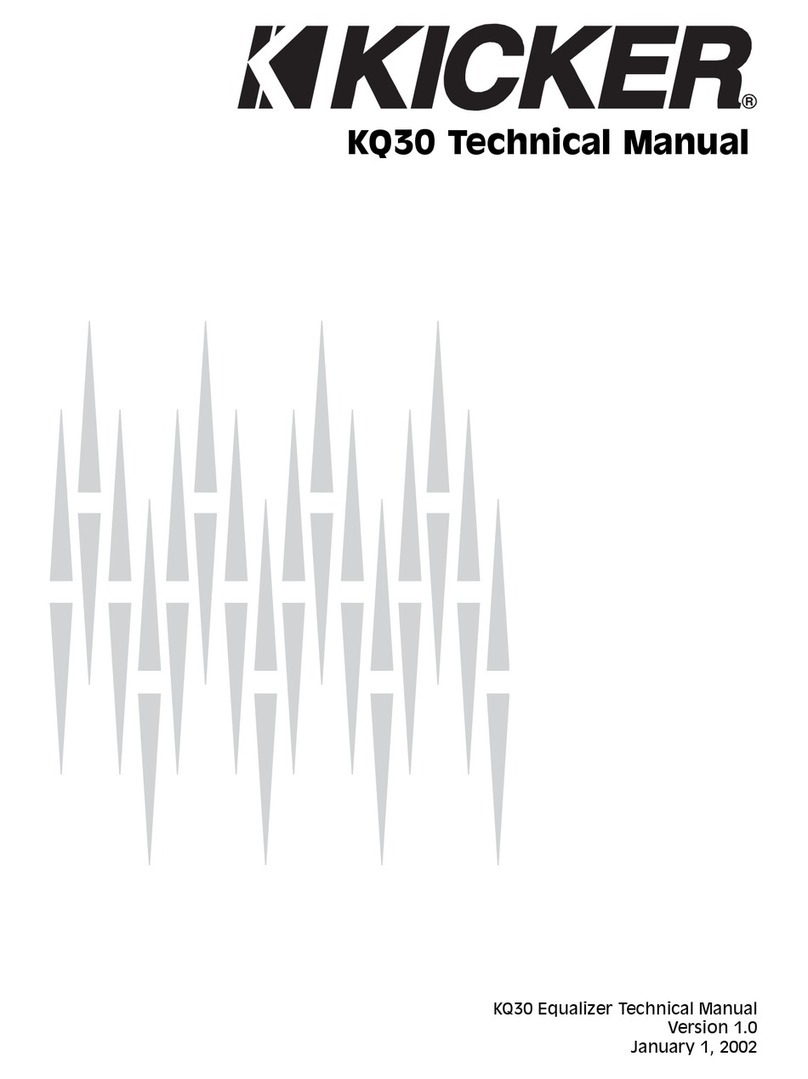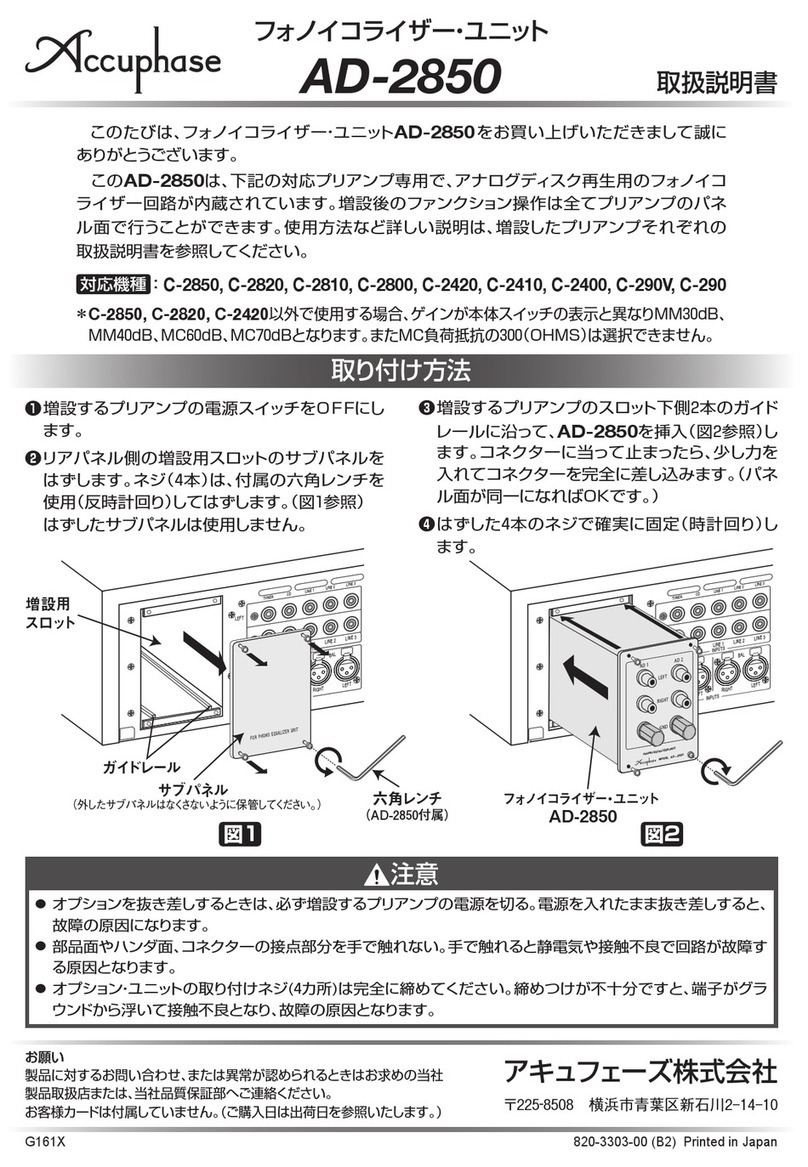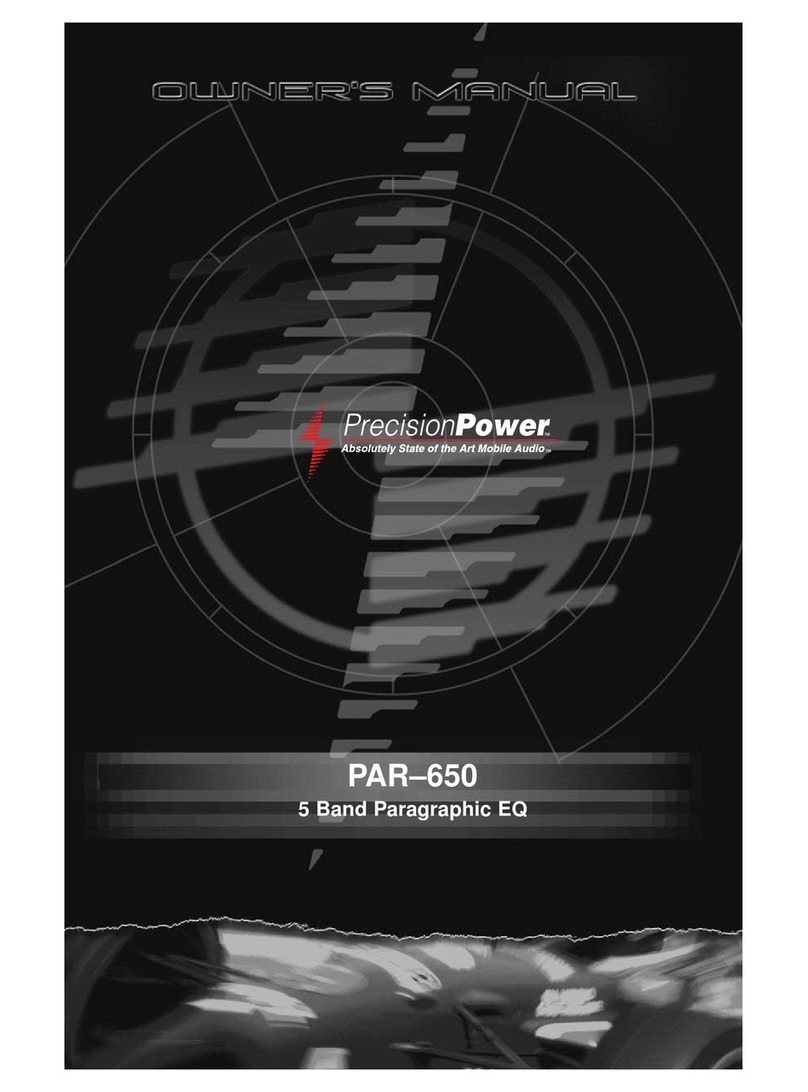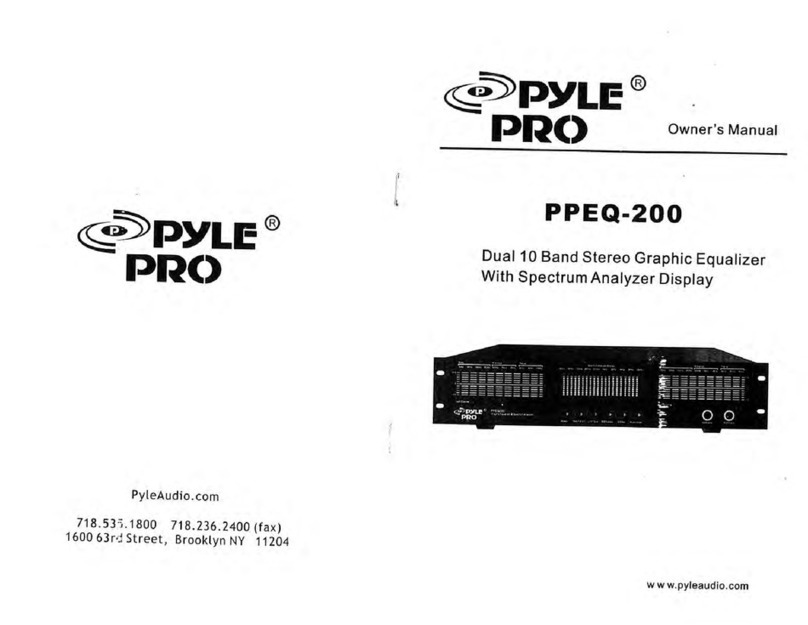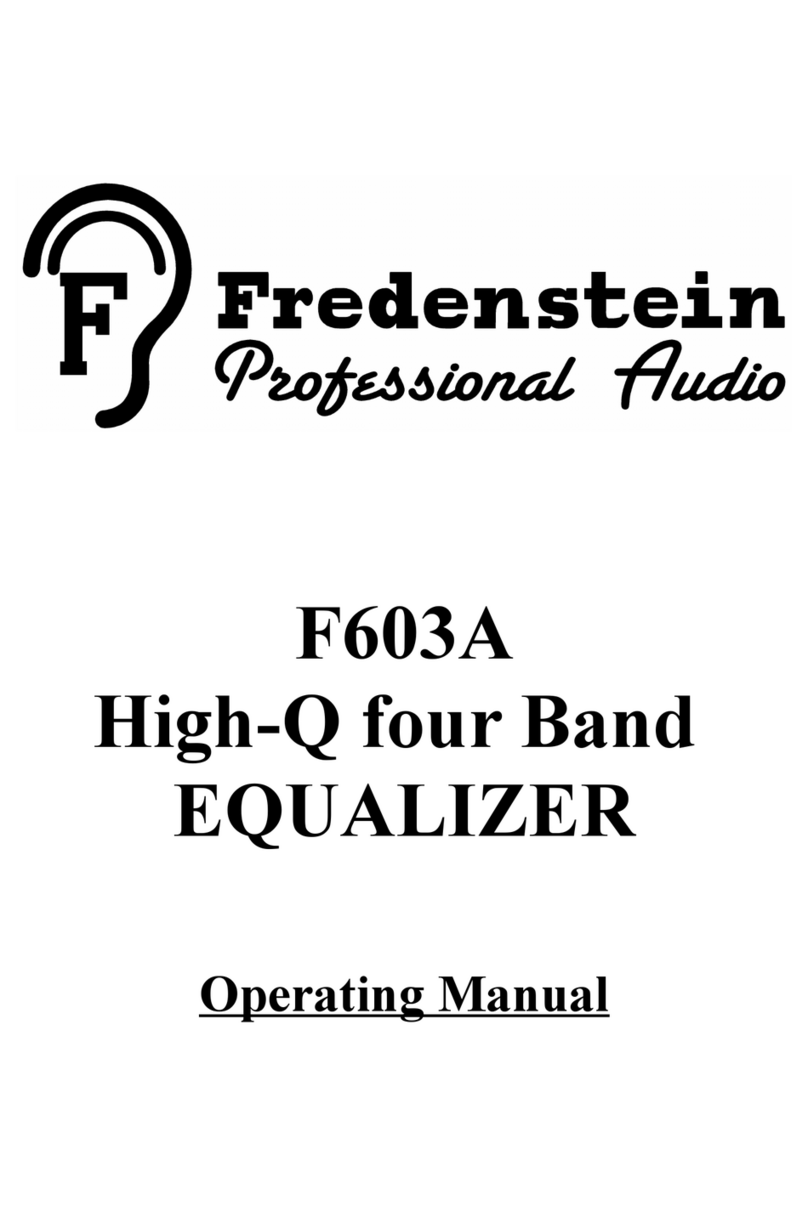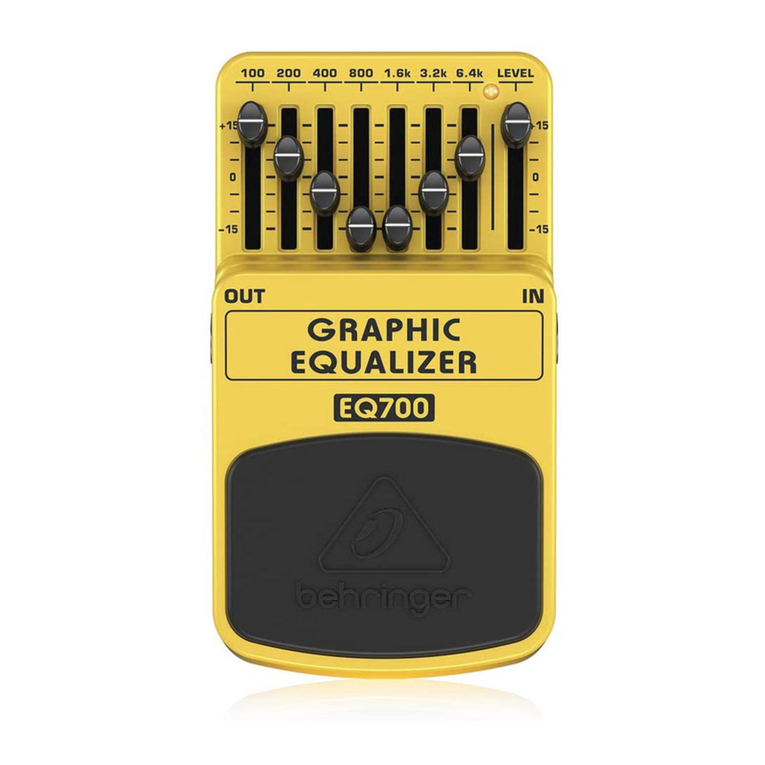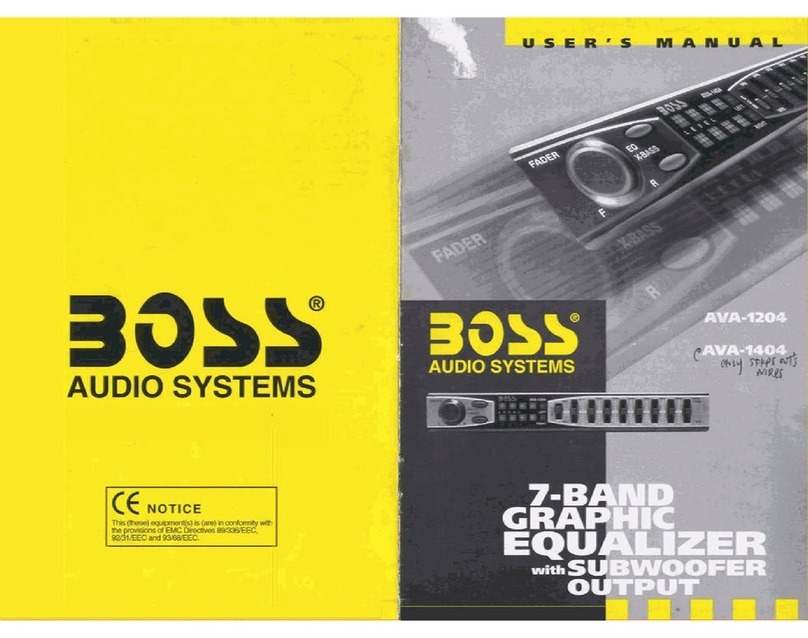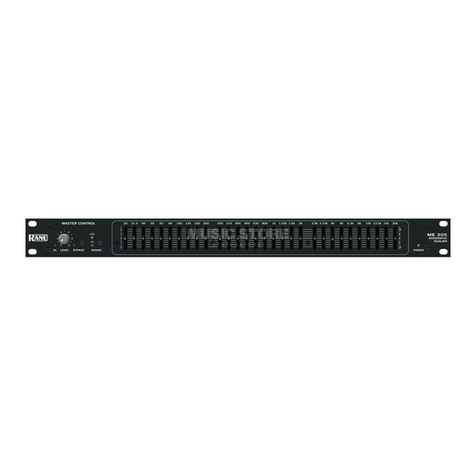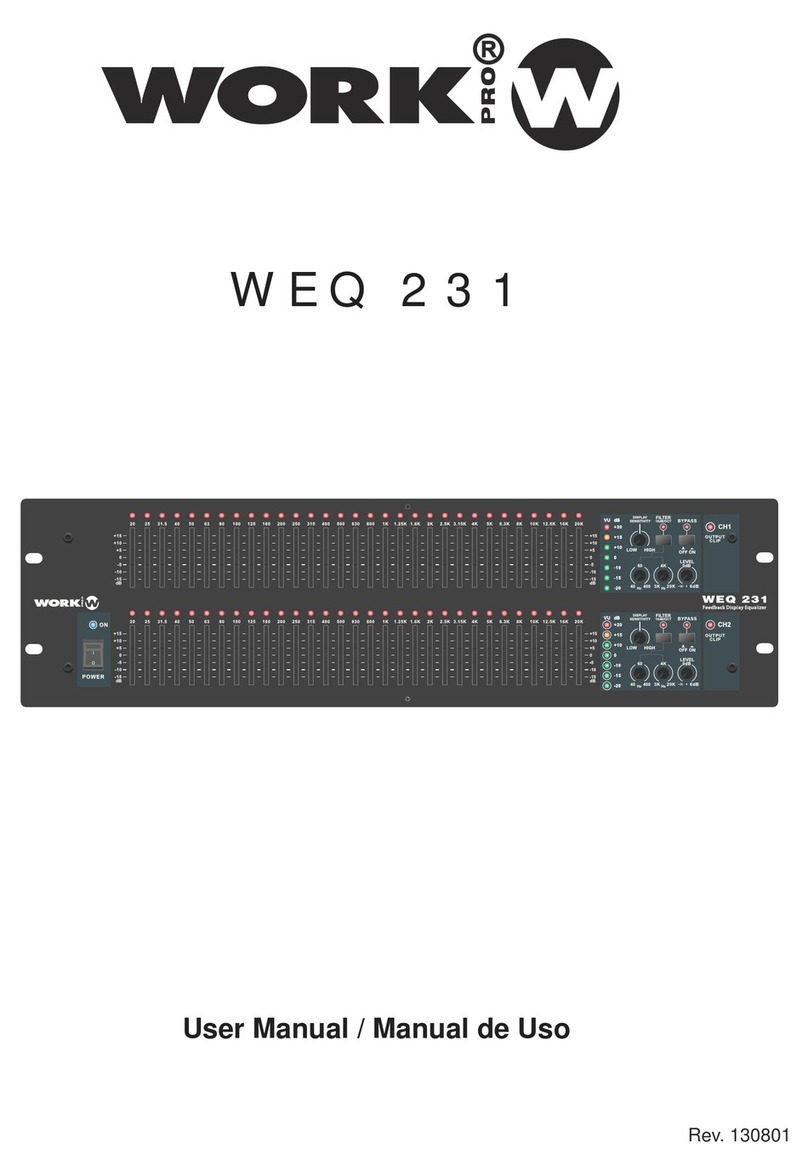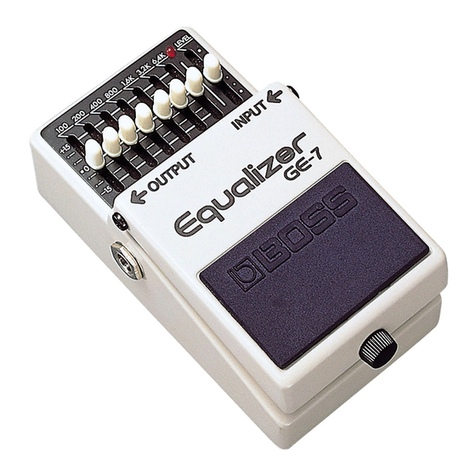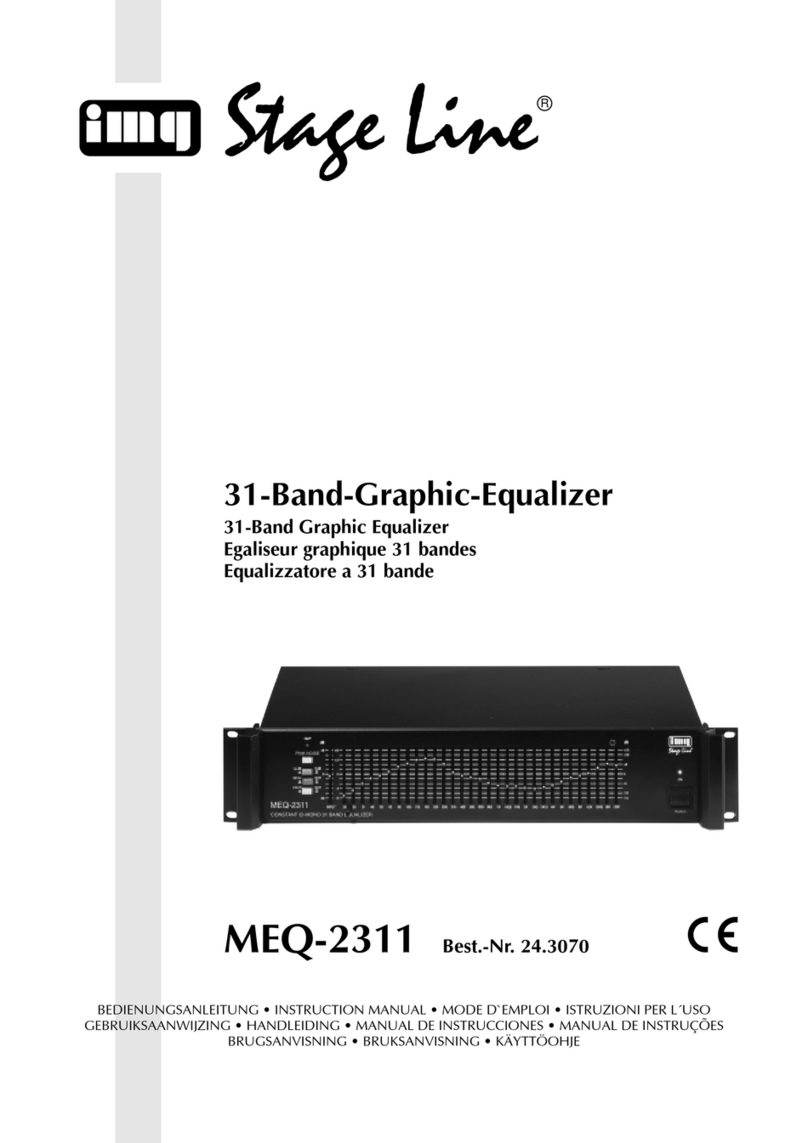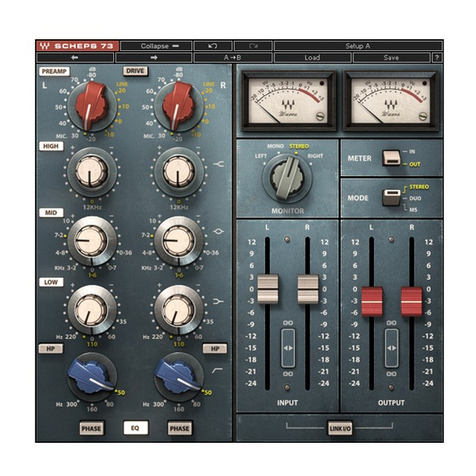Thermionic Culture The Pullet User manual

CULTURE
THERMIONIC
TPHE ULLET
mini passive equaliser
OPERATING MANUAL

©Thermionic Culture Ltd, April 2006 1
CONTENTS
Section Page
1 Introduction 2
2 Connecting the Pullet 3
3 The Pre-amp 4
4 Controls 5
4.1 Mid lift 5
4.2 Mid Cut 5
4.3 High Top 5
4.4 Bypass 6
5 Specification 7

©Thermionic Culture Ltd, April 2006 2
1 Introduction
The Pullet is a two channel passive equaliser which has no
active electronic components included in its design. This means
that when using the Pullet it is necessary to use a pre-amp in
order to provide the make up gain required. The Pullet has been
designed with the Earlybird pre-amp in mind but although it is
optimised for use with the Earlybird, care has been taken to
ensure that the Pullet will give excellent results when used with
any suitable pre-amp available. In this respect the Pullet
becomes very versatile because the Eq facilities provided can
be combined with the sound quality of the chosen pre-amp.
The Pullet will give up to 21 dB of boost or 17dB of cut
simultaneously to a choice of 11 boost frequencies, with
variable Q, and 11 cut frequencies. We have also included an
“air” control to give access to high frequencies.
As usual Thermionic Culture has taken care to ensure that the
distortion and noise level introduced by the Pullet are kept as
low as possible.

©Thermionic Culture Ltd, April 2006 3
2 Connecting the Pullet
The Pullet is designed to work at line level (+4dBm) input.
Standard 3pin XLR sockets are provided (pin 2 hot). The output
is 38 dB lower and has an output impedance of 1.3kΩ(max).
The Pullet output should not be routed through a patch bay,
short balanced leads are recommended for the Pullet output to
pre-amp input connection. Suitable leads are available from
Thermionic Culture for connecting to balanced inputs.

©Thermionic Culture Ltd, April 2006 4
3 The Pre-amp
The pre-amp that is used will need to give approximately 40dB
of gain to the signal after it has been passed through the Pullet
and ideally the pre-amp will have an input impedance of 1200Ω.
This will allow the signal to be kept at unity gain when the Pullet
is either in bypass or when there is no equalisation being used.
The Pullet should always be placed before the pre-amp in the
signal path ie. Signal goes into the Pullet then out of the Pullet
into the pre-amp.
There are situations in which the 40dB of gain can be reduced.
For example, a high level signal which is having 21dB of mid-
boost applied to it. In these situations the amount of gain can be
altered according to the user’s taste.
The advantages of using the Earlybird as a pre-amp with the
Pullet are that, apart from extremely low noise and high
undistorted output levels, it provides the optimum input
impedance as well as having active Eq built in. This gives
control over bass frequencies and added flexibility over mid
range and high frequencies.
It is very important to note that any pre-amp with a 48V supply
for condenser microphones should have the 48V supply
switched off. We have taken care to upgrade the necessary
components to ensure that no damage is done to the Pullet if
48V is accidentally left on for a short time.

©Thermionic Culture Ltd, April 2006 5
4 Controls
4.1 Mid Lift
The amount of mid lift is continuously variable between 0
and 21 dB. The actual amount of gain is dependant on the
Q setting, so at a narrow Q, 21dB can be added at the
centre frequency but at a wide Q, this will drop to around
16dB.
f (kHz)
This control will select the centre frequency of the mid
boost circuit.
Q
This control sets the width of the frequency band being
boosted. ‘H’i is a very narrow band of frequencies either
side of the centre frequency, ‘Lo’ is a wide band of
frequencies.
4.2 Mid Cut)
The amount of mid cut is continuously variable between 0
and -17 dB.
f(kHz)
This control will select the centre frequency of the mid cut
circuit.
4.3 High Top (kHz)
This control allows the high frequency content of the signal
to be boosted or cut with a shelving filter.
‘Cut’ brings a lo pass filter in which reaches -6 dB at either
15, 11 or 6 kHz.
‘Lift’ brings a shelving Eq in, which reaches its peak of 6 dB
at either 15,12 or 10 kHz.

©Thermionic Culture Ltd, April 2006 6
‘∞’means that in this position there is no high top Eq being
used.
4.4 Bypass
This control allows the Eq circuit to be completely
bypassed, although the input transformer is still left in
circuit to help with balancing issues.
There are two pre-set pots situated inside the Pullet that
can be adjusted to alter the level of the bypass signal.
These are factory set so that when used with the Earlybird,
or fed from an impedance of much more than 600Ω, the
Pullet gives unity gain when bypassed. However when
used with a pre-amp that has a different input impedance
from the Earlybird the pre-sets may need to be adjusted to
give a unity gain bypass signal. This is simply done by
putting a signal through the Pullet and adjusting the pre-
sets until the bypass signal measures at the same level as
the level when not in bypass and no boost or cut is used.
The pre-sets are found in the centre of the pullet on a tag
strip, there is one for each channel.

©Thermionic Culture Ltd, April 2006 7
5 Specifications
Output impedance 1.3kΩ
Input impedance 15kΩ
(with Pullet eq. in and
set
flat, ie. no cut or
boost)
Maximum Mid Lift 21dB
Maximum Mid Cut -17dB
Max High Top Lift 6dB
Max High Top Cut -9dB
Frequency response with
no Eq ±0.3dB
17Hz to 50kHz
Input and Output
connectors
4x3 pin XLRs, wired balanced,
pin 2 hot

Pullet frequency response curves
f(Hz)
-25
-20
-15
-10
-5
0
5
10
15
20
25
Gain(dB)
10 100 1000 10000
6k air cut
11k air cut
15k air cut
10k air lift
12k air lift
15k air lift
0.34k cut
0.5k cut
0.7k cut
1k cut
1.4k cut
2k cut
2.8k cut
4k cut
6k cut
8k cut
3.5k Hi Q
4.4k Hi Q
6.3k Hi Q
8.3k Hi Q
5k Hi Q
0.8k Hi Q
1.2k Hi Q
1.6k Hi Q
2k Hi Q
2.5k Hi Q
3k Hi Q
1.2k Lo Q
3k Lo Q
6.3k Lo Q

Thermionic Culture Ltd., Harlow, Essex, UK
Tel: +44 (0)1279 414770 Fax: +44 (0)1279 412233
©Thermionic Culture Ltd, April 2006. Printed in UK.
Table of contents
Other Thermionic Culture Stereo Equalizer manuals
